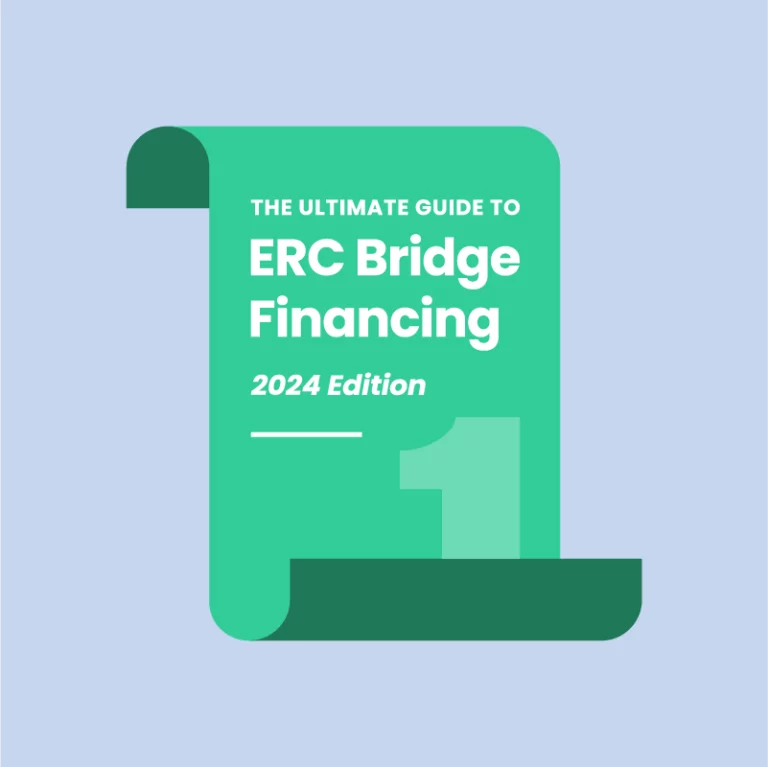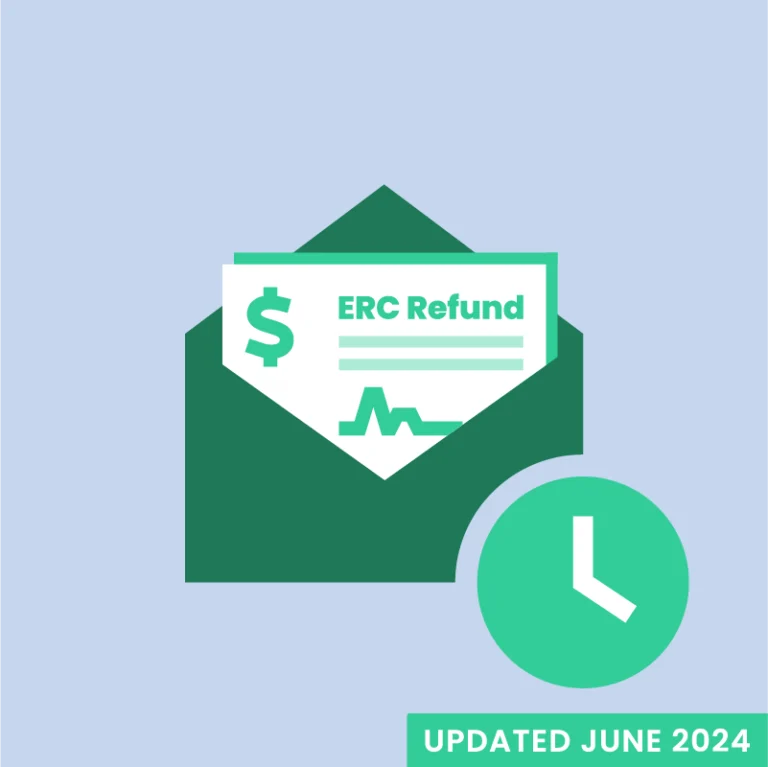As employers confront new challenges in the aftermath of the COVID-19 pandemic, many have been slow to evaluate, or quick to assume they are not eligible for, the Employee Retention Credit (ERC). But employers are not to blame for ERC misconceptions. The ERC program is a trillion-dollar opportunity and legislative labyrinth. Let’s quickly recap.
The ERC is a refundable payroll tax credit program that was first introduced in the Coronavirus Aid, Relief, and Economic Security (CARES) Act on March 27, 2020. Its purpose was to encourage employers to retain employees during the COVID-19 pandemic. The passage of the Consolidated Appropriations Act (CAA) on December 27, 2020 — just four days before the program was set to expire — extended the program to June 30, 2021, increased the credit amount, and eased the qualification requirements. The passage of the American Rescue Plan Act (ARPA) on March 11, 2021, extended the program again to December 31, 2021. The passage of the Infrastructure Investment and Jobs Act (IIJA) on November 15, 2021, retroactively repealed Q4 of 2021.
What’s more — the IRS has released 94 FAQs, four major notices (totaling 165 pages), and a new revenue procedure. It is understandable why there is still a lot of confusion surrounding the ERC. This article will cover seven misconceptions we have heard at 1st Capital Financial in 2022.
ERC MISCONCEPTION #1
Employers who have not experienced a significant decline in gross receipts are not eligible for the ERC.
This is false. Regardless of whether an employer experienced a negative financial impact during the COVID-19 pandemic, and satisfies the gross receipts test, they may still qualify for the ERC program. Other qualifications include a full or partial suspension by a government authority and a supply chain disruption, each of which is met by satisfying the suspension test.
Naturally, employers often overlook the fact that a reduction in revenue is not the only way to qualify for the program.
ERC MISCONCEPTION #2
Employers cannot claim a suspension by a governmental authority if they were still operating.
This is not true. The legislation provides that an employer who experienced a full or partial suspension from a governmental authority — which can be a federal, state, or local entity — may satisfy the suspension test. For example, full-service restaurants that were asked to cease in-person dining but continued operating for delivery and takeout orders would be able to demonstrate a partial suspension.
Note on Supply Chain Disruptions
Many employers and tax professionals do not realize that a full or partial suspension by a governmental authority may also apply if it impacted a business’s key suppliers. If the suspension impacted a supplier’s ability to deliver critical goods to an employer’s business, and the employer’s business could not readily source those critical goods from an alternative supplier, that employer may be eligible for the ERC program.
Note on Essential Businesses
Despite the IRS issuing FAQs that initially stated essential business employers were ineligible for ERC (the IRS has since revised this information), essential business employers are eligible.
Note: The IRS stipulates their ERC-related FAQs should not be relied upon as legal authority or consistent with current legislation.
ERC MISCONCEPTION #3
Employers are not eligible for the ERC if they have received a second draw from the Paycheck Protection Program (PPP).
This is incorrect. Firstly — all PPP loan recipients are eligible for the ERC program if they meet one or more of the qualifications. While the CARES Act originally prohibited employers from receiving funds from both programs, the CAA retroactively amended this provision with one caveat: no “double-dipping.” Employers cannot claim the ERC on payroll expenses paid with forgiven PPP loan funds. Employers can, however, claim the ERC on payroll expenses paid during the same period covered by a PPP loan.
Such payroll costs shall not include qualified wages taken into account in determining the credit allowed under section 2301 of the CARES Act of qualified wages taken into account in determining the credit allowed under subsection (a) or (d) of section 303 of the Taxpayer Certainty and Disaster Relief Act of 2020.
As for recipients of second draws from the PPP, it is possible for employers to qualify for additional benefits under the ERC program.
ERC MISCONCEPTION #4
Only small business employers can apply for the ERC program.
This is false. The size of an employer’s business does not qualify or disqualify them for the ERC program. The employer’s headcount classification as a small or large business only affects the calculation of qualified wages for their ERC claim. For example, small business employers may include all wages and qualified health plan expenses paid per eligible period. Large business employers, on the other hand, can only include the non-service wages and proportionate health plan expenses (i.e., wages and health plan expenses for employees that were not working) paid per eligible period.
How Employers’ Headcount Classification is Determined
In most cases, an employer’s business is considered a “small business” if they had less than or equal to 100 full-time W2 employees in 2019 for 2020, and less than or equal to 500 full-time W2 employees in 2019 for 2021. An employer with greater than 100 and less than 500 full-time W2 employees in 2019 is treated as a “large business” for 2020 and a small business for 2021. An employer that had greater than 500 full-time W2 employees in 2019 is considered a large business for both 2020 and 2021.
Note on the Aggregation Rule
Section 2301(d) of the CARES Act stipulates that all members of an aggregated group must be treated as a single employer when determining an employer’s eligibility and headcount classification.
Note: Certain types of wages are restricted from inclusion, regardless of the employer’s size, such as those that fall within the double-dipping prohibition detailed in ERC legislation, wages paid to majority owners and their immediate family members, and nontaxable compensation.
ERC MISCONCEPTION #5
501(c) organizations, also known as charities or non-profit organizations, are prohibited from filing an ERC claim.
This is an understandable misconception. The ERC is largely based on employers’ payroll tax liability, unlike other federal tax credits that are taken against businesses’ income tax liability. Furthermore, the CARES Act explicitly acknowledges tax-exempt organizations’ eligibility for the ERC program.
ERC MISCONCEPTION #6
Public colleges, universities, and medical practices are ineligible for the ERC program.
This is not true. When the CARES Act was first introduced, there was a provision that precluded governmental employers and instrumentalities of the government from claiming the ERC. The CAA modified this provision allowing public colleges, universities, and medical practices to apply for the ERC in 2021 — equal to up to $21,000.00 per eligible employee.
ERC MISCONCEPTION #7
Employers cannot file an ERC claim if their businesses were founded during the COVID-19 pandemic.
This is incorrect. Any trade or business that began after February 15, 2020, and whose annualized gross receipts did not exceed $1 million may qualify for the ERC program as a Recovery Startup Business.
Determining Annualized Gross Receipts
A recovery startup business that began on or after February 15, 2020, with a calendar-based year-end, will not have a full year of gross receipts to look at. The following is a simple formula we can use for this purpose:
Annualized Gross Receipts = (Total Gross Receipts for the Year / Number of Operating Months) * 12
Let’s look at an example. Say a business started on June 1, 2020, and its gross receipts were $261,331.00 for the year. Applying the formula above, we get the following:
Annualized Gross Receipts = ($261,331.00 / 7) *12 = $447,996.00
Changes to the Employee Retention Credit Calculation
Per IRS Notice 2021-49, recovery startup businesses are eligible to receive up to $7,000.00 per employee per quarter for a maximum credit amount of $50,000.00 in Q3 and Q4 of 2021 (a total of $100,000.00).
Conclusion
It is unlikely that we will ever see another relief program that compares to the value and scope of application of the ERC in our lifetime. However, ongoing changes to ERC legislation by the IRS and an abundance of outdated and speculative information on the web have led to a lot of misconceptions about the program. Employers should consult a tax professional to assess their eligibility for the ERC and navigate the complexities of filing an ERC claim.
Find Out If You’re Eligible for the ERC
You may be eligible for a payroll tax refund of up to $26,000.00 per employee in 2020 or 2021. This is money you’ve earned, brought to you by the company you trust. Submit an ERC application online to find out if you’re eligible or schedule an ERC consultation to learn more.



